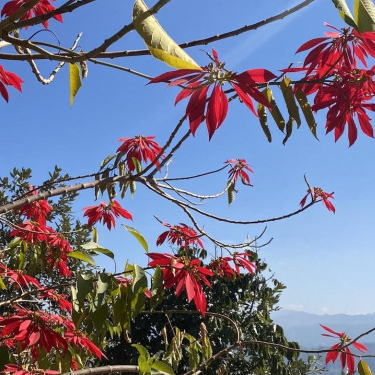
Hiking in Nepal
Nepal is a popular destination for hiking and trekking enthusiasts from around the world. It is home to some of the most breathtaking landscapes and challenging trails in the world, including the majestic Himalayas and Mount Everest, the highest peak on Earth. Here are some key points about hiking in Nepal:
Trekking Seasons: The best time to go hiking in Nepal is during the spring (March to June) and autumn (September to December) seasons. The weather is generally clear, with moderate temperatures and stunning views. However, some treks can also be done in winter (January and February, and monsoon seasons July and August, depending on the region.
Popular Trekking Regions: Nepal offers a wide range of trekking options, catering to both beginners and experienced trekkers. Some of the popular trekking regions include:
Everest Region: Home to the iconic Everest Base Camp trek, this region offers spectacular views of Mount Everest, along with other high peaks, Sherpa culture, and the famous Tengboche Monastery.
Annapurna Region: Known for its diverse landscapes, this region offers treks like the Annapurna Circuit, Annapurna Base Camp, and Poon Hill. You'll encounter stunning mountain vistas, lush forests, and traditional villages.
Langtang Region: Located north of Kathmandu, this region is renowned for its scenic beauty, Langtang National Park, and the Langtang Valley trek, which provides a glimpse into Tibetan-influenced culture.
Mustang Region: Known for its unique Tibetan culture and desert-like landscapes, the Upper Mustang trek is a popular choice among those seeking a remote and culturally rich trekking experience.
Trekking Permits: Most trekking regions in Nepal require obtaining permits before starting your hike. The two main permits are the Annapurna Conservation Area Permit (ACAP) and the TIMS (Trekkers' Information Management System) card. These permits are typically obtained through authorized trekking agencies like Nature Trail Trekking and Expeditions.
Teahouse Trekking: In many popular trekking regions of Nepal, you'll find well-established teahouse networks. Teahouses are small lodges along the trekking routes that provide accommodation, meals, and basic amenities for trekkers. This makes trekking more accessible, as you don't need to carry camping gear or food supplies.
Altitude Considerations: Nepal's mountainous terrain means that altitude sickness is a potential risk during high-altitude treks. It's important to acclimatize properly by ascending gradually, staying hydrated, and paying attention to your body's signals. It's advisable to consult with a healthcare professional before attempting high-altitude treks.
Guided vs. Independent Trekking: While it's possible to go on independent treks in Nepal, many trekkers opt for guided tours or hire local guides and porters. A guide can provide valuable support, local knowledge, and help ensure your safety during the trek. They can also assist with language barriers and cultural interactions.
Remember that trekking in Nepal can be physically demanding, and it's essential to be prepared with suitable gear, proper training, and travel insurance. It's also advisable to research and plan your trek in advance, considering your fitness level, time constraints, and personal preferences.

Feel free to inquire with me, and I will craft a customized holiday experience for you! You're in for incredible adventures and the creation of unforgettable memories!
Discover incredible offers for your upcoming adventure by subscribing to our newsletter with the latest travel tips and updates.
